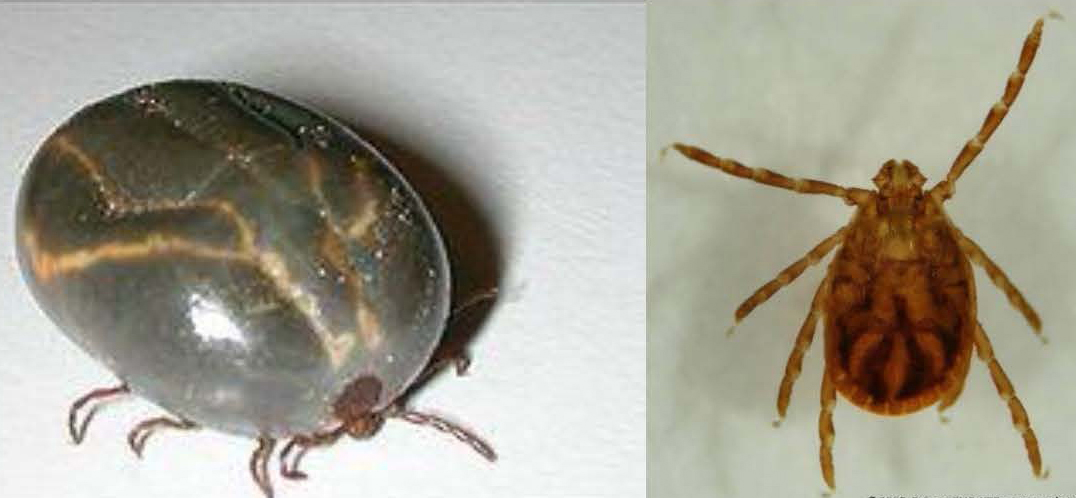IMMEDIATE RELEASE Contact:
June 5, 2018
www.nj.gov/agriculture
PO Box 330
Jeff Wolfe
P: (609) 633-2954
C: (609) 433-1785
E: jeff.wolfe@ag.nj.gov
(TRENTON) – The USDA’s National Veterinary Services Laboratory (NVSL) confirmed today that the Longhorned tick (Haemaphysalis longicornis) was found at a location in northern Mercer County as well as there being new findings in Hunterdon, Union and Middlesex counties. The NVSL also confirmed a tick taken from a dog in Union County in 2013 was also a Longhorned tick.
The confirmations of some of the new ticks, including the one in Mercer County, were collected as part of a statewide “Tick Blitz” led by the Rutgers Center for Vector Biology earlier this month and developed primarily by professionals from New Jersey’s county mosquito control programs. The Longhorned tick was previously confirmed to be found in Union, Hunterdon and Middlesex counties. Ticks from the Tick Blitz were taken from each of New Jersey’s 21 counties and did not reveal the Longhorned tick being found in any of the other 17 counties.
Longhorned ticks found thus far in New Jersey have tested negative for pathogens dangerous to humans or animals.
Earlier this year, the Longhorned tick was confirmed in Hunterdon County, a Union County park and at Rutgers University–New Brunswick’s Cook Campus farm in Middlesex County. The tick from 2013 was re-examined by Rutgers University staff and then sent to the NVSL for confirmation. Various local, state, and federal animal health agencies, as well as Rutgers, continue to work together to identify the range of the ticks and develop a plan to eliminate them from localized areas and prevent unintentional spread of the tick.
“If we find ticks in a specific area, we will do what we can to eliminate them from those known sites of infestation,” said Dr. Manoel Tamassia, the New Jersey Department of Agriculture State Veterinarian. “We will work to continue to identify the areas of the state where the tick is so we can help prevent its spread.”
Robert M. Goodman, executive dean of the Rutgers School of Environmental and Biological Sciences, said, “The Rutgers-led Tick Blitz has provided rapid statewide information on the distribution of Longhorned ticks and other tick species across New Jersey by leveraging the unique relationship between Rutgers Center for Vector Biology and county mosquito control programs. Statewide information is essential to develop assessments of risk and the best strategies for control.”
Rutgers–New Brunswick’s New Jersey Agricultural Experiment Station provides information on tick-borne diseases at https://njaes.rutgers.edu/tick/ .
Like deer ticks, the nymphs of the Longhorned tick are very small (resembling tiny spiders) and can easily go unnoticed on animals and people. Although specimens identified in New Jersey have not been found to carry pathogens, Longhorned ticks in other countries have spread diseases. They are known to infest a wide range of species including humans, dogs, cats, and livestock.
As part of New Jersey’s investigation, counties have set up drop off locations for the public to submit ticks they find on themselves, their pets, livestock or on wildlife. Information on these locations and how to submit a tick can be found on the New Jersey Department of Agriculture’s website at http://www.state.nj.us/agriculture/divisions/ah/
A tick line has also been established to leave a message if a tick is found and there is uncertainty about what the next steps are. If you need information about what to do if you find a tick on yourself, your pets or livestock call 1-833-NEWTICK (1-833-639-8425).
###
To learn more about the New Jersey Department of Agriculture, find us on Facebook at www.facebook.com/NJDeptofAgriculture and www.facebook.com/JerseyFreshOfficial or Twitter @NJDA and @JerseyFreshNJDA.



